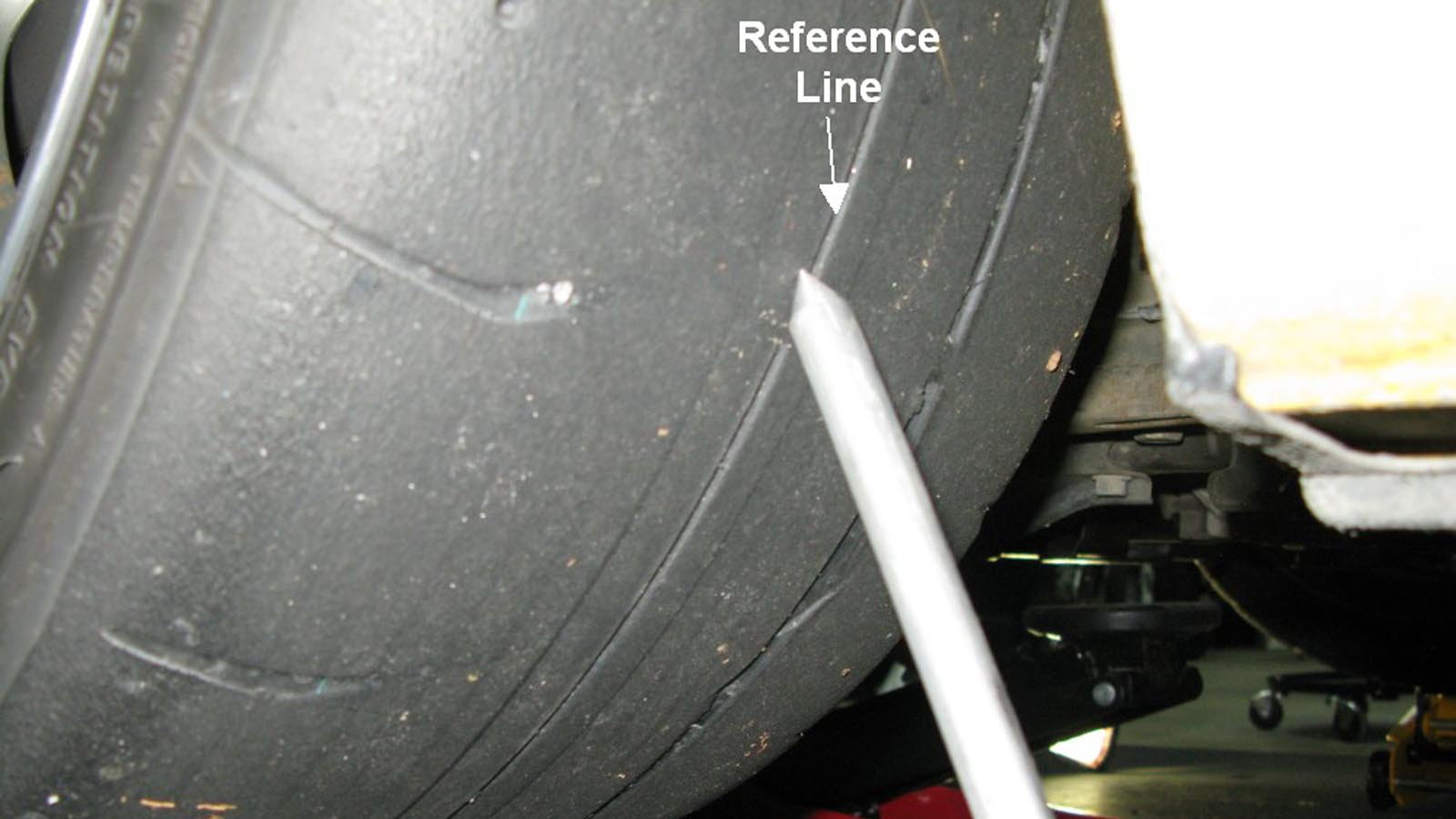Understanding Tire Wear Patterns
Camber, caster, toe, and inflation all contribute to making high-performance rubber stick to the road. Knowing how to identify wear patterns has as much to do with safety as lap times so know what to look for and how to adjust.














Overinflation
We’ll start with the most basic of tire wear since it’s the one most of us are familiar with. Cranking up air pressures in a tire will result in the center degrading prematurely. It can be hard to spot if you are slightly overinflated, but very apparent if the problem is severe. Overinflation in extreme cases can be dangerous as the tire becomes subject to exploding.
>>Join the conversation about Tire Wear Patterns right here in S2Ki.com.
Under inflation
This rears its head in the form of both the inner and outer edges being worn. Michelin recommends hot pressures of 32 psi in the front and 36 psi in the rear for road racing applications with an emphasis on vehicle setup and the driver’s personal style. If the rest of your setup is correct, be aware of what this pattern may indicate.
Camber wear
Camber helps a car corner by ensuring the tire is as flat as possible through the turns. After pressure is correct this is the most likely thing you’ll encounter at the track or on backroads if you drive “spiritedly.” You’ll likely see the outer edge disappear and become smooth. If you drive hard and often then aligning a car with several degrees of camber may see improved tire life. On the contrary, excessive camber for someone who doesn’t drive hard is going to wear the inside faster. Finding a balance is critical to tire life and depends on driver skill as well.
>>Join the conversation about Tire Wear Patterns right here in S2Ki.com.
Toe
AKA duck feet. Too much of this will burn through tires faster than an exotic gets to 60mph. It should be said that toe is an essential part of getting a car to perform on the track, but it is not advised to run an excessive amount on the street. With toe out, you’re just dragging that inside edge all day. On the street, it’s completely unnecessary, even though you might feel like the freeway is a race track on your morning commute.
>>Join the conversation about Tire Wear Patterns right here in S2Ki.com.
Cupping
Watch for this one. Your tire is likely letting you know something in the suspension is wearing down or failing. If you see cupping do a visual inspection and move the tire checking for any kind of play in the wheel. If you have a track car and see cupping it’s best to pack up until the problem is fixed. Failure of suspension components at the track is bad news.
>>Join the conversation about Tire Wear Patterns right here in S2Ki.com.
Finding the sweet spot
Finding the right alignment on the street predominantly depends on how hard you drive on a daily basis and how hard you enjoy your car on back roads. Finding the right alignment at the track is a much deeper endeavor that can see different alignments for different race tracks. Everything from corner type to surface structure and temperature can vary in a race environment.
>>Join the conversation about Tire Wear Patterns right here in S2Ki.com.
What's next?
Coming up soon I’ll dive into the tools and equipment needed to accurately dial in a car and the process involved in doing so. Thankfully there is a method to the madness and if you follow this method the headache of setting up a car won’t be that bad. See you next time!
>>Join the conversation about Tire Wear Patterns right here in S2Ki.com.
